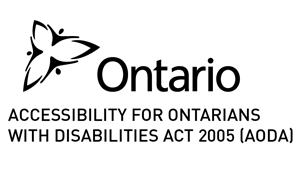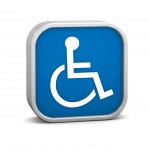
For commercial business owners, 2025 is a very important year.
(And it’ll be here sooner than you think).
That’s when the Accessibility for Ontarians with Disabilities Act (AODA) becomes law.
In short, it means that:
- All businesses (big or small, local or franchises) must be accessible to anyone wanting to enter it, regardless of their disability
- Staff working at those businesses must be properly trained to interact and assist anyone with accessibility needs
Being compliant with the AODA is all about making the right enhancements to your business – both in terms of commercial locksmith upgrades and personnel.
Even though 2025 seems very far away, it’ll be here before you know it.
Here, then, are some tips from Aim Lock & Safe to help your business get a head-start on AODA compliance.
Part 1: Upgrades your business should make
Before you start making and modifications to your business, take a walk around every inch and note any areas which may cause accessibility issues.
Beyond entrances and exits, this could include places like:
- Washrooms
- Storage rooms
- Aisles or shopping areas
- Loading docks
- Parking lots
From there, you can update your business with things like:

Handicap door operators
Perhaps the easiest and most effective upgrade you can make is to install a handicap door operator.
You’ve probably seen them in government buildings. They’re the round, silver button with a wheelchair symbol on it.
Converting your manual push/pull door into an automatic one is quite easy actually.
And by doing so, you’re making your business accessible to more people than those who need a wheelchair:
- Elderly customers
- People carrying large packages
Contact us for more information about our handicap door operators
Wheelchair ramps
Even the slightest step can provide an obstacle for anyone using a wheelchair.
Usually, there are two types of wheelchair ramps:
- Permanent: These ramps are built, attached and affixed to entry and exit points. They can be made from aluminum, galvanized steel or even concrete.
- Temporary/Portable: These wheelchair ramps are lightweight and can be folded or put away when not in use.
An added benefit to wheelchair ramps (compared to say, wheelchair lifts) is that they’ll still work properly in case of an emergency (lifts may malfunction or work too slowly).

Wider doors & frames
If there are areas where you can expand your commercial doors & frames, you may want to do it.
Things like wheelchairs and scooters come in different sizes and configurations. They may not easily fit (if at all) through a single door.
A double-door enhanced with something like a commercial wireless release lets you improve your company’s accessibility while maintaining control over who goes where.
Lastly, if you plan on building a new business location prior to 2025, you’ll want to account for wider doors during the new construction schedule.
That way, you’ll know for certain that your new address will be compliant well in advance of the law coming into effect.
Contact us to learn more about our commercial doors and frames

Part 2: How to interact with people with disabilities
It’s important for your business to properly interact and communicate with disabled persons.
The Accessibility for Ontarians with Disabilities Act classifies a disabled individual as someone with:
- Any degree of physical disability
- Mental impairment or developmental disability
- Learning disability or dysfunction
- Mental disorder
- Blindness, deafness or hearing/speech impediments
Just like different people, different disabilities require different types of communication and understanding skills.
Physical disabilities
Not all physical disabilities require a wheelchair. Things like arthritis or heart conditions can cause difficulty with moving, standing or sitting.
Usually, a customer will identify their needs to you. To help them out, you can:
- Speak directly to them as you would any other customer
- Ask before offering any help; folks with disabilities often have their own way of doing things
- Provide information on things like commercial door locks, washrooms, automatic openers, etc.
- Do not touch any assistive devices unless in an emergency

Deaf/Hard of Hearing
Being hard of hearing does not mean total deafness.
Hearing loss spans a variety of degrees.
And remember, customers who are deaf may rely on hearing aids or lip reading when communicating with you.
Things you can do include:
- Asking how you can help, but don’t shout
- Speaking in a well-lit area where the customer can see your face
- To attract attention, wave your hand or gently touch their shoulder
- Communicating with the customer, not their interpreter (if they have one)
- Repeating yourself as necessary

Visual impediments
Just like deafness mentioned above, there are various levels of sight loss.
Of course, total blindness is among them.
In some instances, an individual may use a guide dog or a white cane to assist them as they navigate your business.
So make certain you and your employees:
- Identify yourself as you approach your customer
- Speak normally and clearly
- If you offer assistance, wait until you receive permission
- Do not walk away without saying good-bye
- Show your customer to a chair or comfortable location
Intellectual disabilities
What we do on a daily basis (and take for granted), people with intellectual disabilities may struggle with.
Intellectual disabilities don’t always present themselves. And when they do, there’s a good chance your customer will understand more than you think.
- Don’t assume what a person can or can’t do
- Use simple words and short sentences
- Give one piece of information at a time
- Speak directly to your customer, not the person they’re with
Come to Aim Lock & Safe for your business accessibility needs
Whether you need advice, products or on-site property consultations, Aim Lock & Safe has you covered.
We’ve been making businesses from Toronto to Cambridge (and all points in between) AODA compliant.
And we can do the same for you.
Start by contacting us with any questions you have. We’ll get back to you ASAP with the information you need.







